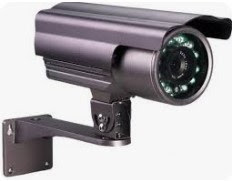Linking Multiple IP Camera Networks Together using Multiple Power over Ethernet (PoE) Switches involves careful planning and configuration. Here's a general guide to help you set up such a network:
1. Plan Your Network Topology:
Ø
Identify the locations where
you want to install IP cameras.
Ø Plan the
placement of PoE switches to minimize cable lengths and ensure efficient data
transfer.
Ø Determine the IP
address scheme for your cameras and switches.
2. Choose PoE Switches:
Ø
Select PoE switches that
meet your requirements in terms of port count, PoE budget, and manageability.
Ø Ensure that the
switches support the required PoE standards (e.g., 802.3af or 802.3at).
3. Install and Configure PoE Switches:
Ø
Mount the PoE switches in
appropriate locations, ensuring proper ventilation.
Ø Connect the
switches to your network using Ethernet cables.
Ø Power on the
switches.
Ø Access the
switch management interface (usually through a web browser) using the provided
IP address and configure basic settings like IP address, subnet mask, and
gateway.
4. Connect IP Cameras to PoE Switches:
Ø
Connect the IP cameras to
the PoE switch using Ethernet cables.
Ø Ensure that the
cameras are compatible with the PoE standard supported by the switch.
Ø Cameras should
receive power and data through the same Ethernet cable.
5. Configure IP Addresses:
Ø
Assign static or dynamic IP
addresses to each IP camera within the same subnet.
Ø Ensure that each
camera has a unique IP address to avoid conflicts.
6. VLAN Configuration (Optional):
Ø
If security or traffic isolation
is a concern, consider configuring Virtual LANs (VLANs) on your switches.
Ø Group cameras
into different VLANs based on their location or purpose.
7. Monitoring and Management:
Ø
Set up network monitoring
tools to keep track of the health and performance of your IP camera network.
Ø Enable any
security features provided by the switches, such as MAC address filtering or
port security.
8. Test and Troubleshoot:
Ø Test the
connectivity and functionality of each camera.
Ø Monitor network
performance and troubleshoot any issues that may arise.
Ø Ensure that
power budgets on switches are not exceeded.
9. Documentation:
Maintain detailed
documentation of your network configuration, IP addresses, and camera locations
for future reference.
Remember that specific steps may vary depending on the brand and model of your
PoE switches and IP cameras. Refer to the user manuals provided by the
manufacturers for detailed instructions tailored to your equipment.









0 Comments